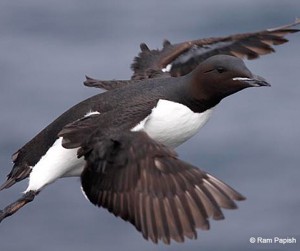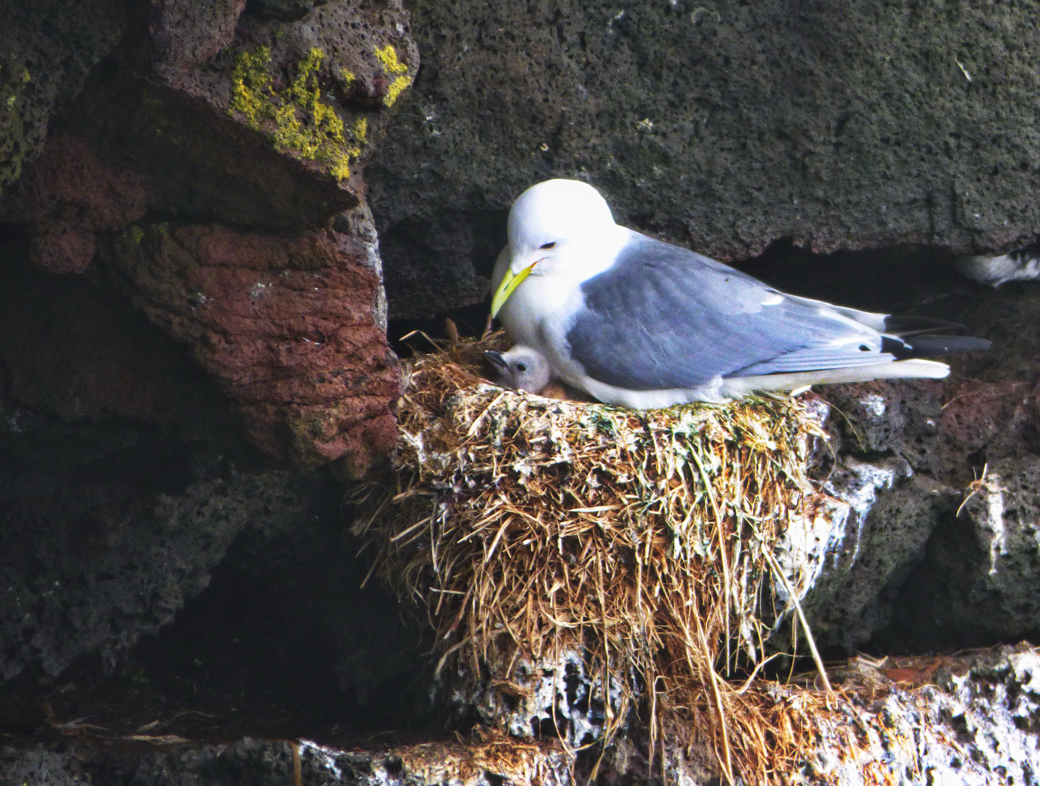Black legged Kittiwake and chick. Photo by Chauncey
Many people have noticed changes in the Bering Sea in recent years. We’ve seen increased water and air temperatures, a reduction in sea-ice extent, and mass die-offs of seabirds, such as murres.
Given all these observations, many people are interested in understanding more about how climate change is affecting the Bering Sea marine ecosystem.
Seabirds are an easily observed marine predator because they breed on land during the summer months, and they are easy to study and catch during this period.
The Aleut Community of Saint Paul Island has recently received funds from the US Fish and Wildlife Service to study the marine habitat use of seabirds during the breeding and non-breeding months. Seabird Youth Network is excited to help participate in this project and share its outcomes. The project team also includes folk from the University of Alaska, Fairbanks (UAF), University of Alaska Anchorage, and World Wildlife Fund.
This project will focus on two different seabirds; the thick-billed murre (dives over 100m to find food such as fish, squid and zooplankton), and the black-legged kittiwake (a surface-feeding seabird that feeds on fish and zooplankton).

Thick-billed murre. Photo by Ram Papish
Fieldwork starts this summer on St. Paul Island. Both kittiwakes and murres will be caught during the summer breeding season of 2023 and 2024, and will be banded with an attached geolocator before release. Geolocators are small tracking devices that have a light sensor, internal clock, battery, and a computer that together use daylight to estimate and store locations. These same birds will be recaught during the summers of 2024 and 2025, and the geolocators will be removed. Downloaded data from the geolocators will show us where these birds have spent their winter months.
 Geolocator attached to a leg band on a black legged kittiwake. Photo by Dan Cushin
Geolocator attached to a leg band on a black legged kittiwake. Photo by Dan Cushin
We’re excited to follow the fieldwork and results of this project, and all updates will be linked on the Seabird Youth Network blog under “winter movements of seabirds”.

